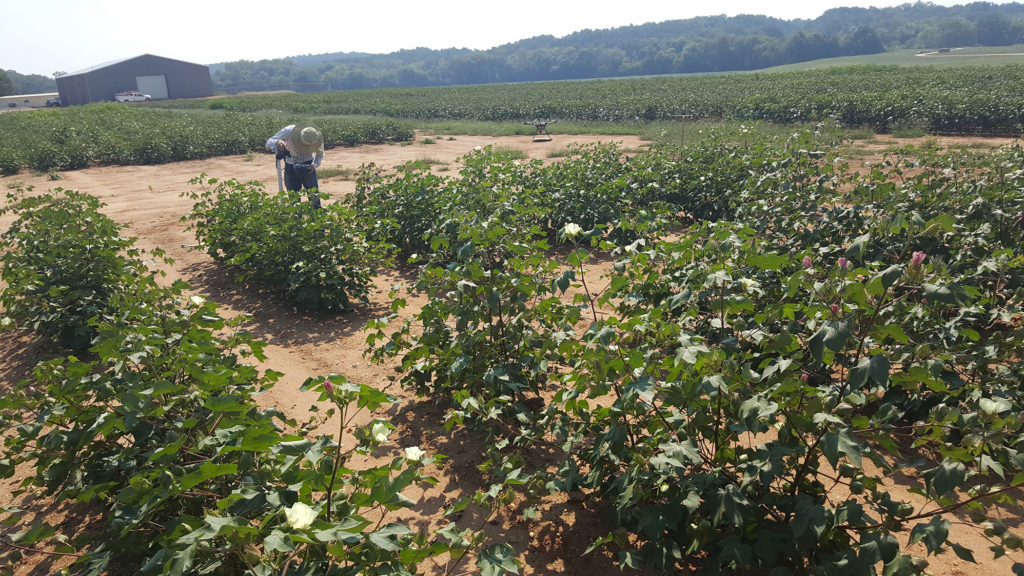It may be a while before robots and drones are as common as tractors and combine harvesters on farms, but the high-tech tools may soon play a major role in helping feed the world’s rapidly growing population.
At UGA, a team of researchers is developing a robotic system of all-terrain rovers and unmanned aerial drones that can more quickly and accurately gather and analyze data on the physical characteristics of crops, including their growth patterns, stress tolerance and general health. This information is vital for scientists who are working to increase agricultural production in a time of rapid population growth.
“By the middle of this century, scientists estimate the world’s population will reach 9.1 billion people, which is a 30 percent increase in a little more than 30 years,” said Changying “Charlie” Li, a professor in UGA’s College of Engineering and the principal investigator on the project. “This increase in population will demand that we nearly double our current food production. That’s a tall order but one solution is to use genomic tools to develop high-quality, high-yield, adaptable plants.”
While scientists can gather data on plant characteristics now, the process is expensive and painstakingly slow, as researchers must manually record data one plant at a time. But the team of robots developed by Li and his collaborators will one day allow researchers to compile data on entire fields of crops throughout the growing season.
The project addresses a major bottleneck that’s holding up plant genetics research, said Andrew Paterson, a co-principal investigator. Paterson, a world leader in the mapping and sequencing of flowering-plant genomes, is a Regents’ Professor in UGA’s College of Agricultural and Environmental Sciences and Franklin College of Arts and Sciences.
In addition to multispectral, hyperspectral and thermal cameras, the robots will be outfitted with Light Detection and Ranging, or LiDAR, a remote sensing method that uses light in the form of a pulsed laser to measure distances. The technology will allow the researchers to create precise three-dimensional images of the plants they study.
With teams of autonomous vehicles rumbling through rows of crops and hovering overhead, algorithms also will play a key role in making sure the robots and drones perform their assigned tasks while staying out of each other’s way. Javad Mohammadpour Velni, a co-principal investigator on the project and an assistant professor in the College of Engineering, is developing a suite of analytical tools that will allow the ground and aerial vehicles to operate independently but collaboratively to efficiently cover fields and collect different types of data.
The UGA researchers believe their work will provide a platform for plant geneticists to gather massive amounts of phenotype data and empower advances in crops that sustain the planet’s population.
The team’s project is supported by a $954,000 grant from the National Robotics Initiative, a program jointly sponsored by the National Science Foundation, the U.S. Department of Agriculture, the U.S. Department of Energy, NASA and the National Institutes of Health. The goal of the National Robotics Initiative is to accelerate the development and use of next-generation robots in the U.S.
